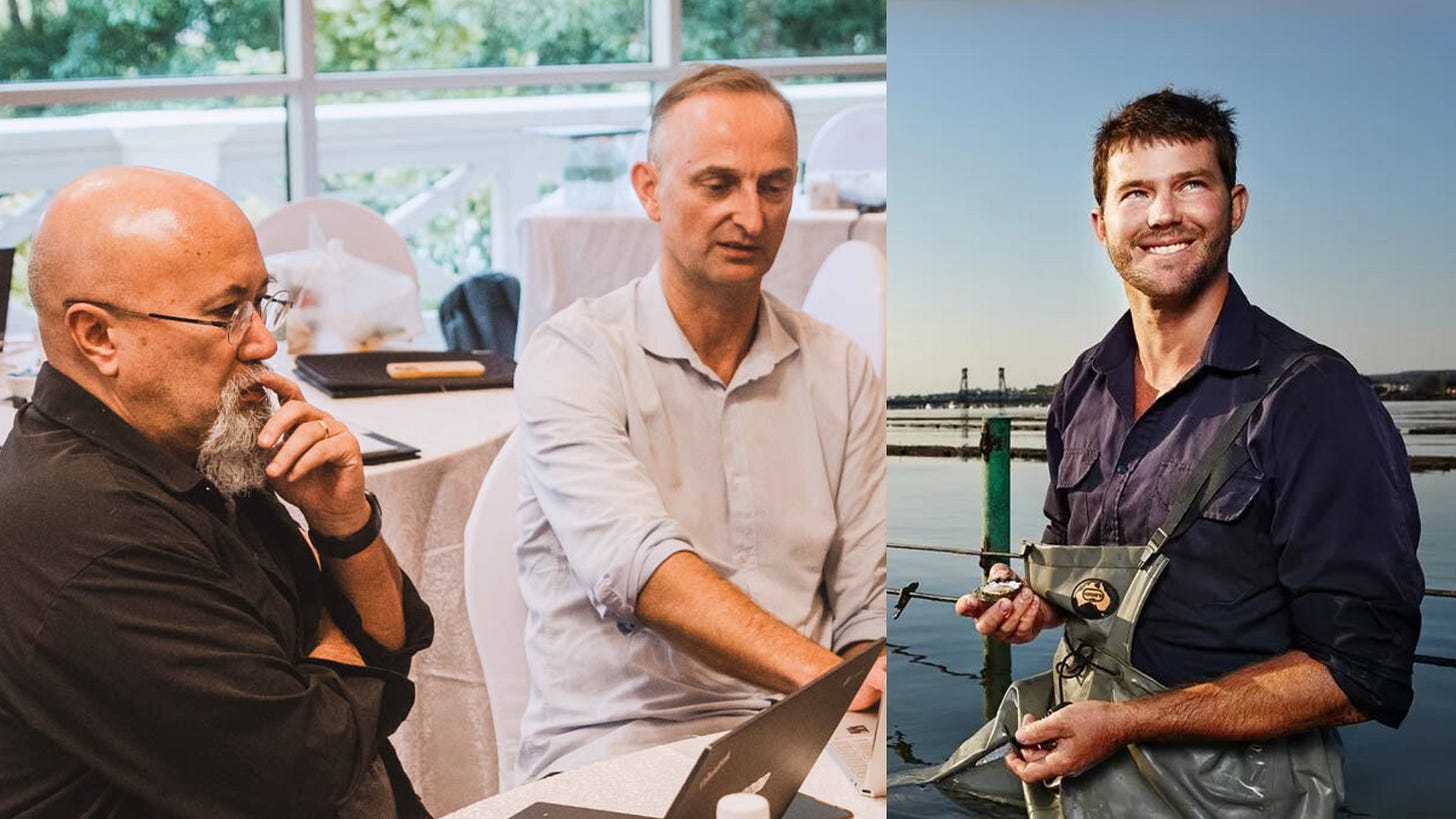🦪 Oceanfamr: Unlocking the barriers to regenerative aquaculture to restore ocean biodiversity at scale [BA+ 2023]
TLDR; With their innovative Farm Finance products, easy-to-use operations software (SaaS), & pioneering Marine Biodiversity Certificates, Oceanfamr's redefining regenerative aquaculture.
The problem: Regenerative shellfish and seaweed farms can provide food while also restoring coastal areas at risk of ecological collapse - But the upfront costs and lack of data to inform management decisions prohibit the industry’s growth.
Given the global boom in seafood demand over the years and the strain it has imposed on wild-caught fisheries, aquaculture-based production has risen sharply, surpassing fisheries production in 2014.
Yet even as the industry continues to grow, business-as-usual aquaculture is not projected to meet global demand in the long-term. Alternatives like cultivated seafood have been proposed as solutions, but even with a US$30B investment, such technologies are only anticipated to meet 2% of total seafood demand - leading to a shortfall of 45.3 million tonnes (Source).
Figure above credits to Planet Tracker Aquafailure report
Regenerative ocean farming, where seaweeds and shellfish are grown in a zero-input model, can offer a cost-effective solution to meet the world’s growing protein needs. Unlike fish or crustacean aquaculture, they don’t require expensive feed or freshwater to sustain their production. They also provide important ecosystem services, like removing large volumes of excessive nutrients like nitrogen and phosphorus from the water, and providing protection to vulnerable coastlines.
If regenerative ocean financing is so wonderful, you might wonder, how come we have not seen it done at scale?
Unfortunately, it boils down to financing, with even publicly listed aquaculture companies suggesting they cannot finance the transition themselves, and that there is a lack of financing opportunities coming from conventional lenders either.
The solution: With a combination of integrated finance products and farm software, Oceanfarmr is addressing the hurdles for regenerative ocean farmers to restore their waters.
Oceanfarmr provides an integrated finance product that automatically qualifies farms based on farm performance, and uses a profit-sharing model for farmers to buy the gear they need or to expand their operations. In this way, they provide farmers with a means to access operating cash and infrastructure to optimise farm scale production, without debt.
Complementary to this is the Oceanfarmr app and web-based dashboard. The software allows farmers to digitise their operations with GPS-linked analytics and real-time operational visibility, while allowing investors to have greater transparency and risk analytics into the farms they support.
In the last 12 months, they've facilitated the restoration of 76,000 sq m of marine habitat, removal of 27 tonnes of Nitrogen and Phosphorus, and filtration of 534 Gigalitres of water - equivalent to over 213,000 Olympic-sized swimming pools.
Moving forward, Oceanfarmr is looking to develop marine biodiversity certificates to further support the farmers in their network who are doing good work.
Meet the team: With a combination of direct and deep experience oyster farming, financial know-how, and technological savvy, Oceanfarmr’s cofounding team is revolutionising aquaculture.
Biodiversity Accelerator+: Tell us about yourselves. What skill sets do each of you bring to the table to make Oceanfarmr work?
Ewan McAsh, CEO: What makes us work well as a team, is that we bring together very different skills, experiences and ways of thinking. Myself with farming and marine science, Matt with finance and operations, and James with data and technology.
Biodiversity Accelerator+: What’s one breakthrough you had with your customers since starting the business?
Matt Parry, CFO: Our initial focus was working with customers to make their operations more scalable and effective through our farm operations software. The breakthrough came when we understood that regenerative aquaculture farms' greatest need was access to finance. Through the use of the underlying farm data to de-risk our farm finance solution, we can fundamentally grow these farms and with them improve the ecosystems and enable the entire community to thrive.
Biodiversity Accelerator+: What’s one request you have for anybody reading this post?
James Horton, CTO: Eat more shellfish and seaweed. Because every time you do you are helping to restore marine biodiversity and grow local communities. Jokes aside, to grow we need capital, and introductions are always appreciated.
Thanks for reading! If you enjoyed learning about Oceanfarmr, be sure to check out their website, and follow them on Linkedin.
You can also find out more about the accelerator at our website here.




